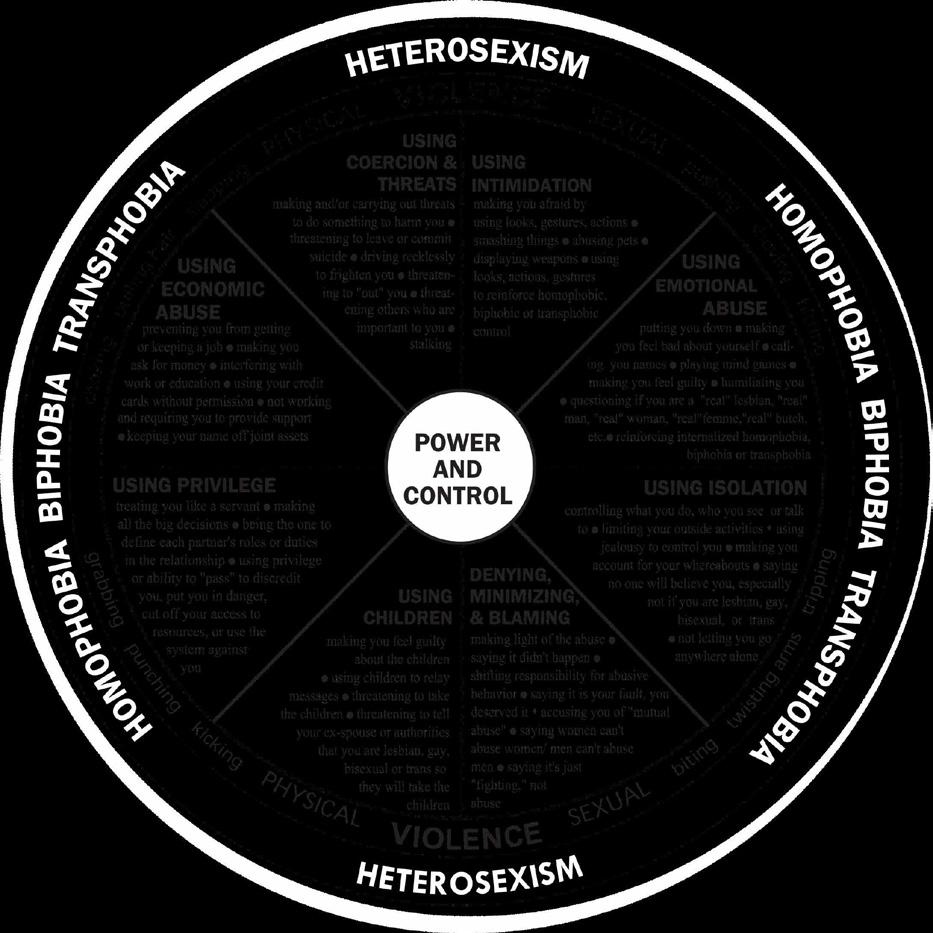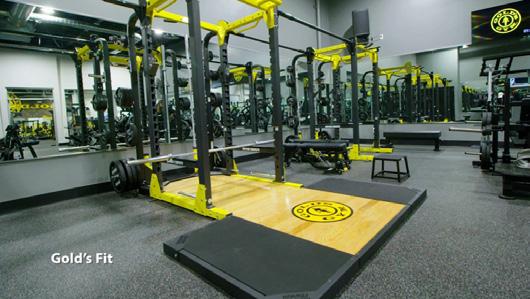
10 minute read
Shattering the Silence Intimate partner violence within LGBTQ+ relationships
SHATT ERING
THE SIL ENCE
Advertisement

BY SARA GIZA
EMBRACEMAGAZINE.US ANNUAL 2020
6 0
WHILE THE STATISTICS to the right are unsettling at best, they are hardly news to those of us who identify on the LGBTQ+ spectrum and within the queer community. Hate crimes have sadly become par for course, as fear and loathing of otherness continues. Yet, largely absent from the collective conversation is the intimate partner violence that occurs within LGBTQ+ relationships, whether W
it involves emotional, physical, sexual or fi nancial abuse, or the use of privilege, children, intimidation and isolation.
Having worked as an advocate at two diff erent dual domestic violence and rape crisis centers, I have witnessed members of the LGBTQ+ community struggle with abuse from their partners, often the people they trust the most. As with minorities and the marginalized, research on this topic has to date been minimal with much room for growth. However, one study on intimate partner violence with LGBTQ+ identifying individuals found that 98% of respondents had experienced verbal abuse by a former partner and 71% had experienced physical violence. 41% stated that an intimate partner had forced them to have sex. (Heintz, 2006) Data from the 2010 National Intimate Partner and Sexual Violence Survey showed that “bisexual
OUT OF WOMEN AND 1 6
OUT OF 1
MEN HAVE EXPERIENCED ATTEMPTED OR COMPLETED RAPE IN THEIR
LIFETIME. (RAINN) 33
LESBIAN, GAY, BISEXUAL AND TRANSGENDER YOUTH ARE TARGETED FOR RAPE AND SEXUAL ASSAULT AT LEAST TWICE AS OFTEN AS STRAIGHT YOUTH.
ABOUT OF TRANSGENDER PEOPLE REPORT “UNWANTED SEXUAL ACTIVITY” AT SOME POINT IN
THEIR LIVES. (Stotzer, R. 2009,
Violence Against Transgender People) 50 %
women experience signifi cantly higher lifetime prevalence of rape, physical violence and/or stalking by an intimate partner,” while 37.3% of bisexual men reported experiencing interpersonal violence.
Anna was 23 and in her second serious same sex relationship. “At the time, I didn’t really have the experience to conceptualize what was going on,” she recalled. “All I knew was that she would have these wild mood swings. She would throw things like the phone or remote control at me, punch a hole in the wall and even broke the handle off of our sliding glass door.”
The idea of intimate partner violence stirred a heteronormative narrative and images. All she ever saw from the media growing up was that straight men were always the perpetrators. It never occurred to her at the time, that she was in fact being a victim of it. “After the blow outs, I felt ashamed and like I had done something wrong. I never told anyone about them. I was the fi rst openly gay person in my family and I wanted everyone to think I was happy in my relationship just like them,” she said. If a person throws something at you, even if they miss and fail to hit you, that is still an act of physical abuse as the intention was there, along with the act of intimidation.
Becky was a recently divorced single mother. After leaving her husband, she surprised everyone including herself, when she fell in love with a friend from high school. She married her partner, Christa, as soon as it became legal. What she did not know at the time was that Christa was hiding an addiction to pain pills.
“I was working two jobs and we were barely getting by. I couldn’t fi gure out why large sums of money kept disappearing. After a particularly bad argument over fi nances, Christa took off . She abruptly returned two days later. I was sitting on the couch and she just walked in like everything was normal.
Power and Control Wheel for Lesbian, Gay, Bisexual and Trans Relationships Power and Control Wheel for Lesbian, Gay, Bisexual and Trans Relationships

Then, she grabbed me by the ankle and dragged me off of the couch.” Becky hadn’t known that fi nancial abuse was a legitimate form of abuse, attached to the same power and control dynamics that later lead to the physical abuse she experienced by her intimate partner. In fact, it is rare that a perpetrator will only use of form of abuse. Often times, they’ll start out utilizing control tactics in one area and later escalate into incorporating other forms of abuse.
During college, Nicole fell in love with Jennifer. For her own very valid reasons, that do not require justifi cation to anyone else, Nicole does not like to be touched sexually. Her partner Jennifer claimed to accept this fact. However, many times, Nicole would wake up in the middle of the night, only to fi nd Jennifer’s hand in her pants. Clearly, Nicole could not give consent while she was asleep. Yet, in all her time referencing those experiences, Nicole never once called it sexual assault or rape.
Even when a survivor attempts to get help, it can be particularly challenging for members of the LGBTQ+ community, especially if they do not feel safe or comfortable disclosing their sexual orientation up front to a stranger. Domestic violence and rape crises centers, often only provide services to survivors of domestic violence when the perpetrator is an intimate partner, while they’ll see survivors of sexual assault regardless of Developed by Roe &
Jagodinsky Adopted from the Domestic Abuse Intervention Project PH 218.722.4134 National Domestic Violence Hotline 1.800.799.SAFE (7233) www.TheHotLine.org
NATIONAL DOMESTIC VIOLENCE HOTLINE • 1.800.799.SAFE (7233) • WWW.THEHOTLINE.ORG Domestic Abuse Intervention Project l 206 West Fourth Street l Duluth, Minnesota 55806 l 218/722-4134 Developed by Roe & Jagodinsky Adapted from the ↓
who the perpetrator is. Jonathan, a gay man in his 30s, was seen as a walk-in at one such agency. He told the receptionist that he needed to speak to an advocate regarding issues he was having with his roommate.
He did not immediately disclose whether his situation involved domestic violence or sexual assault. As the receptionist heard the word “roommate,” she assumed it was domestic violence related and a roommate was not an intimate partner. Believing that he did not meet the criteria for services, he was about to be turned away. At that very moment, a queer advocate happened to walk by and noticed him. She asked him to follow her back to her offi ce. Behind closed doors and aware that he was speaking with a fellow member of the community, he felt comfortable disclosing that the roommate in question had been his partner.
They had recently broken up. However, due to limited fi nancial resources and lack of a support system, he was stuck living there. His ex-boyfriend removed his bedroom door, preventing any sense of privacy and would frequently try to force his way into the shower with him. Thankfully, Jonathan was able to receive emergency shelter once it was determined that he met the criteria.
While it has been estimated that between 20-35% of LGBTQ+ couples experience intimate partner violence, only 1 in 5 LGBTQ+ survivors receive help

NATIONAL RESOURCES TO KNOW
RAPE, ABUSE & INCEST NATIONAL NETWORK
www.rainn.org
THE NATIONAL COALITION OF ANTI-VIOLENCE PROGRAMS
www.ncavp.org
NATIONAL SEXUAL VIOLENCE RESOURCE CENTER
www.nsvrc.org
END RAPE ON CAMPUS
www.endrapeoncampus.org
from service providers. (M. Ciarlante and K. Fountain, 2010) Along with the sense of shame and stigma that survivors often endure, LGBTQ+ individuals face added barriers when seeking assistance. Some include: • Heteronormative/male-centered ste- reotypes • Fear of being outed • Lack of inclusion • Having to legitimatize relationship
If you or someone you know identifi es
as LGBTQ+ and is experiencing abuse of any form from a partner, know that all survivors have rights.
• The right to decide when or if to press charges.
• The right to apply for a protection order.
• The right to consent to or decline
any portion of a Sexual Assault Forensic Exam.
• The right to have a victim advocate
with you at the hospital or in court.
• The right to choose who you share your story with and how.
Most of all, each one of you has the
right to feel safe and loved simultane
ously.
*Names have been changed to protect privacy
–SARA GIZA is a queer, empowerment-based, trauma-informed activist, who has divided her time over the past decade between advocacy work and freelance writing. She can be found on Instagram @searingsara
Sexual Assault Forensic
Exam: What to Expect
If you’ve been assaulted, whether you go to the hospital or not, is completely your choice and whichever choice you make, is valid. At the same time, receiving proper medical care for potential injuries are important. If you go, know:
• You will be treated for critical wounds fi rst. • To the extent that you are able, in order to preserve evidence it is best to refrain from showering, brushing your teeth, eating, drinking or smoking . • They will perform a sexual assault forensic exam, that involves many components: collecting the clothing worn during the assault, swabbing any area penetrated by the perpetrator or that may have their DNA (mouth, vagina, penis, anus, etc.), combing through your pubic hair, taking photographs, scrapping underneath your fi ngernails… • They will take your blood, to test for possible STD’s/HIV etc. • They will give you a series of medications called prophylaxis, designed to prevent STD’s/HIV/Pregnancy, that will include a combination of pills, a drink and a shot in the buttocks. • They likely will call local law enforcement and a detective will want to speak with you to investigate. • This process can take on average up to four hours . • KNOW: you have a right to have an advocate with you, you can decline any portion of the exam, you can decline speaking with law enforcement. You do not have to decide right away if you will or will not press charges. The evidence collected (aka the “rape kit”), can be held for several months until you determine what is best for YOU.
LOCAL HELP IS AVAILABLE
KIMBERLY’S CENTER
(For Abuse Survivors Who Are Youth) Phone: 352.873.4739 Ocala, Florida
PEACEFUL PATHS
(Domestic/Intimate Partner Violence & Emergency Shelter) Phone: 352.377.8255 Gainesville, Florida
VICTIM SERVICES AND RAPE CRISIS CENTER
(All Forms of Sexual Assault) 24 Hour Helpline Phone: 352.264.6760 or Toll Free 866.252.5439 Gainesville, Florida
Trauma Responses 101
Both physical abuse and sexual assault are traumatic experiences. During trauma, as a survival mechanism, our brains take over and typically put us into one of three possible responses, known as “fi ght, fl ight or freeze.” • Fight = fi ghting back against the perpetrator. • Flight = attempting to run or get away. • Freeze = a temporary paralysis that makes us unable to move or speak.
We may assume that we would react a certain way, such as fi ghting back, but the reality is that when the moment comes, we do not get to choose our response. Our brains will automatically put us in whatever response that they think will enhance our odds of survival.
There is no right or wrong response. If you are unable to fi ght back or yell, that does not indicate in any way that you wanted or enjoyed the experience. In some situations, when there is a weapon involved or the perpetrator is obviously stronger than you, fi ghting back can lead to a higher chance of lethality. • Post assault, our brains will continue to try to protect us from the reality. Survivors may experience having zero memory of the assault, or they may remember fragments of it over time or they have very vivid memories at certain times (such as when asleep or triggered by something that reminds them of the perpetrator). They may remember certain things and have no recollection of others. A survivor cannot choose how their brains will process trauma and no matter what responses they do or do not have, doesn’t make their experience any less real or horrifi c.
MOST ADVANCED GYM IN FLORIDA


















